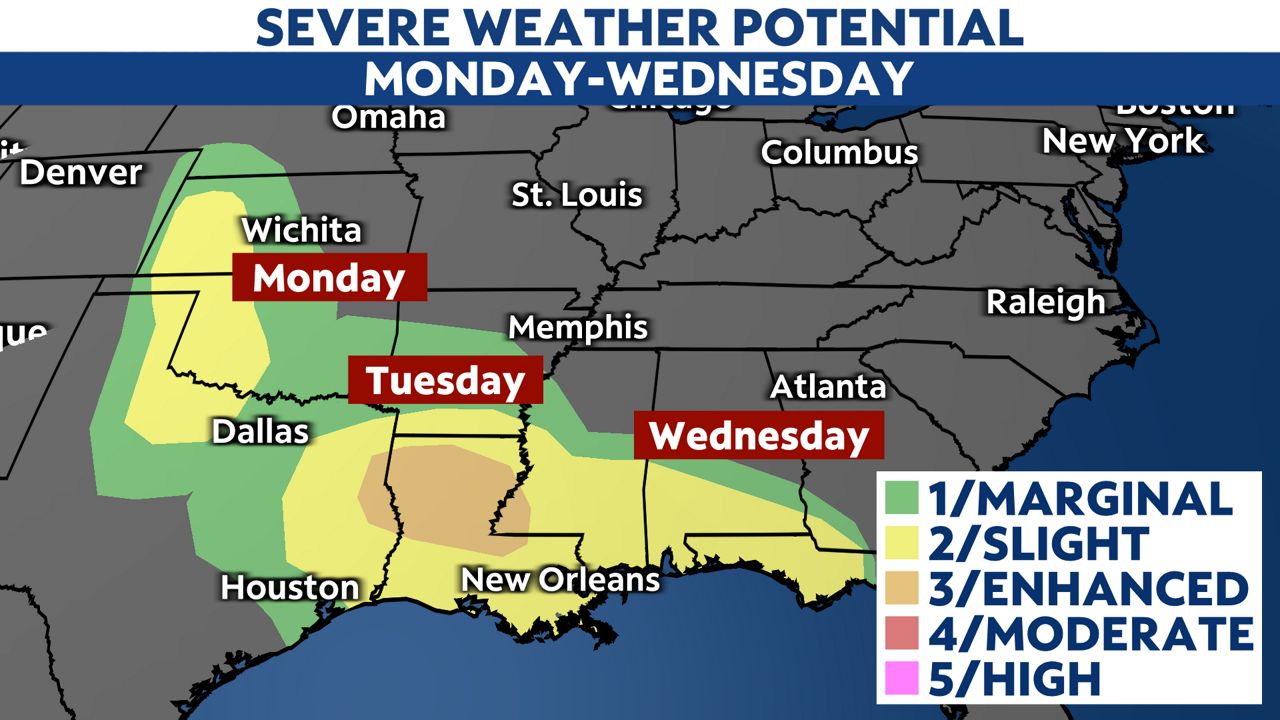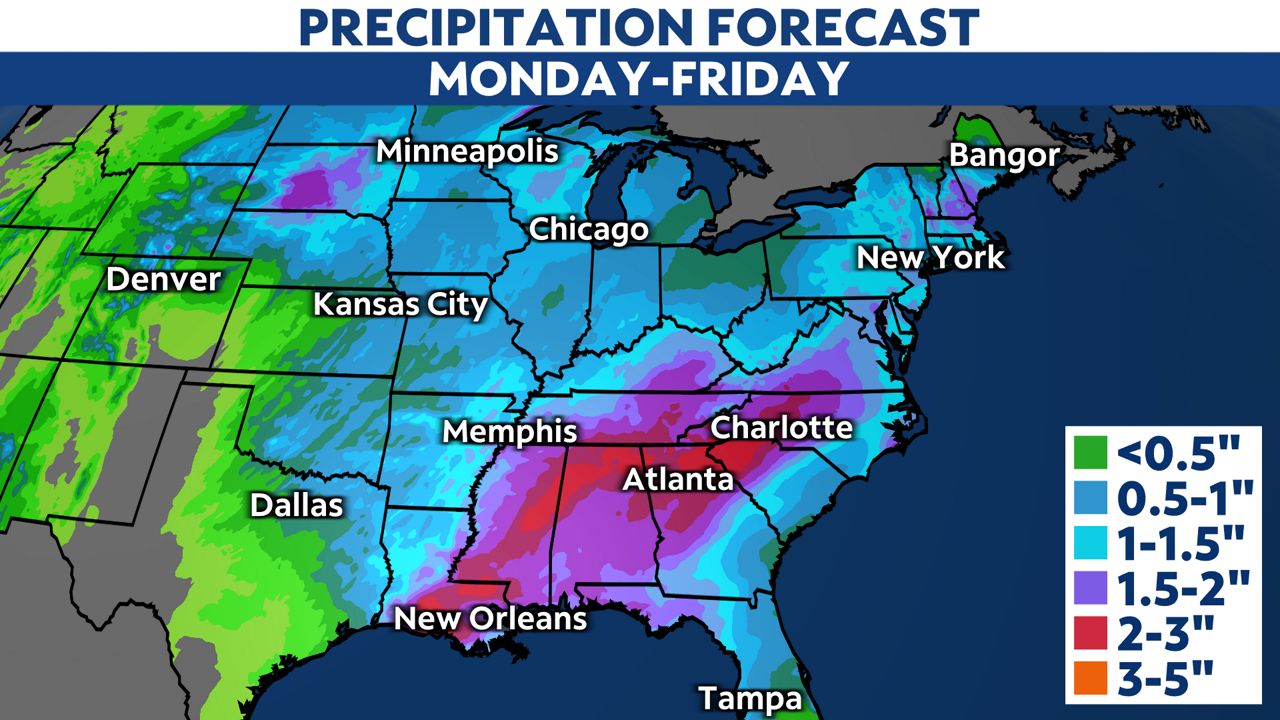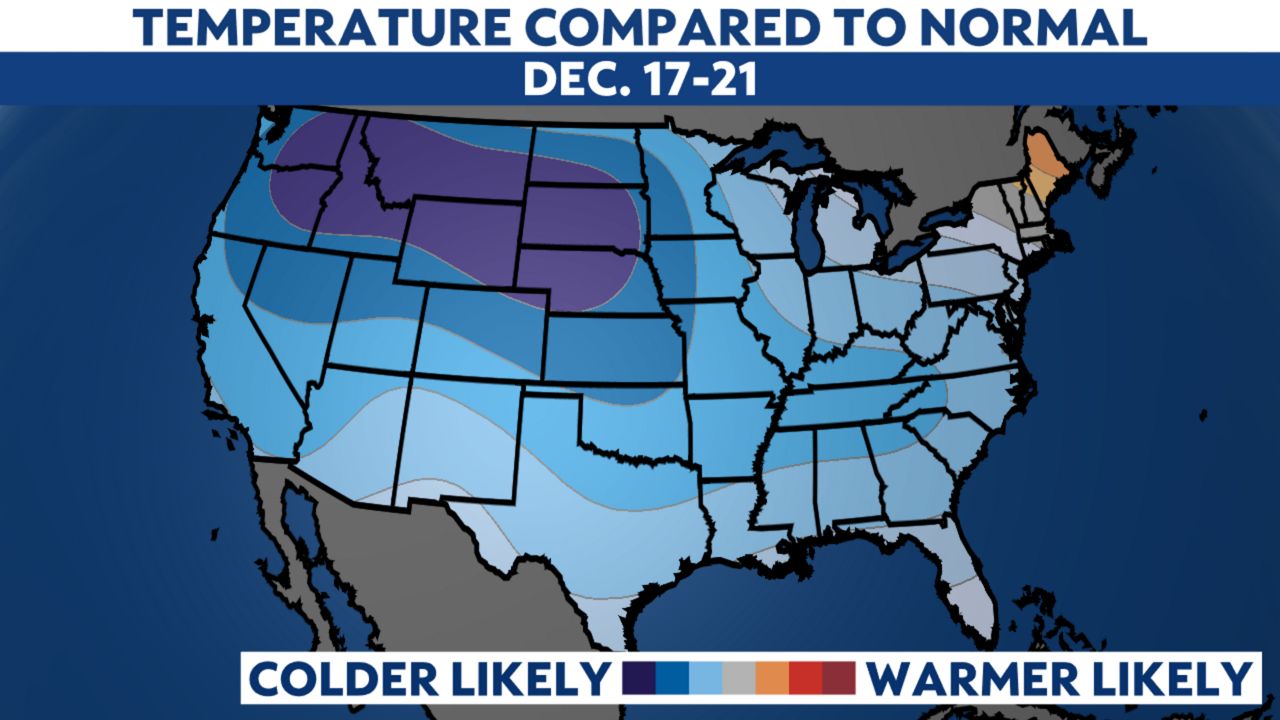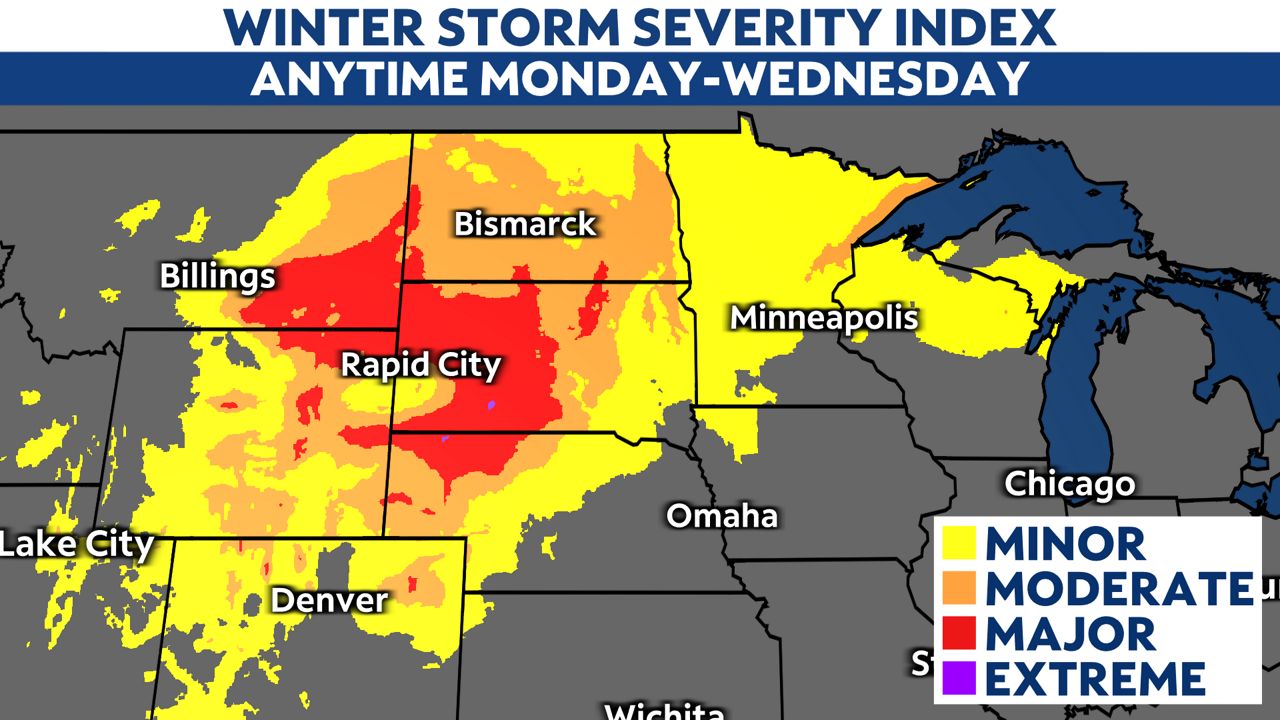A large storm system will bring everything from blizzard conditions to severe thunderstorms as it trudges across the country this week.
Snow, wind and even some ice
After dropping early-week rain and snow in the West, this system will gather strength in the Plains going into Tuesday. Parts of the Northern Plains have Blizzard Warnings for a couple of days as strong winds–in some cases over 50 mph–whip around heavy snow.
Parts of the western Dakotas will get over a foot of snow, while a wintry mix farther east may drop over a quarter-inch of ice. The combination of all this winter weather will cause dangerous travel and some power outages.
Snow and a wintry mix will take its time spreading across the Great Lakes and Northeast. While it’ll begin in Wisconsin and Michigan Tuesday night and Wednesday, it won’t arrive in the Empire State and points east until Thursday at the earliest. Several inches of snow will be possible in northern Wisconsin and in higher elevations of the Northeast, as well as in lake-enhanced bands in Upstate New York.
Rain and storms
Meanwhile, thunderstorms along a cold front rumble across the Southern Plains and the Lower Mississippi Valley and down the Gulf Coast through the week. Some of these may be severe with strong winds, hail and even tornadoes. The greatest threat for severe weather will target northern Louisiana on Tuesday afternoon.

This system will also bring widespread rain and garden-variety thunderstorms to the rest of the eastern U.S. Rainfall totals in quite a few places will probably top an inch, with some in the Southeast even getting over two inches.

Temperatures tumble
Noticeably colder air will follow this system as below-normal temperatures become common and probably stay put for several days.

Your local Spectrum News meteorologists have your forecast here. Stay ahead of significant weather by turning on weather notifications for your location.

